Bob Gould Wizard Cartoons
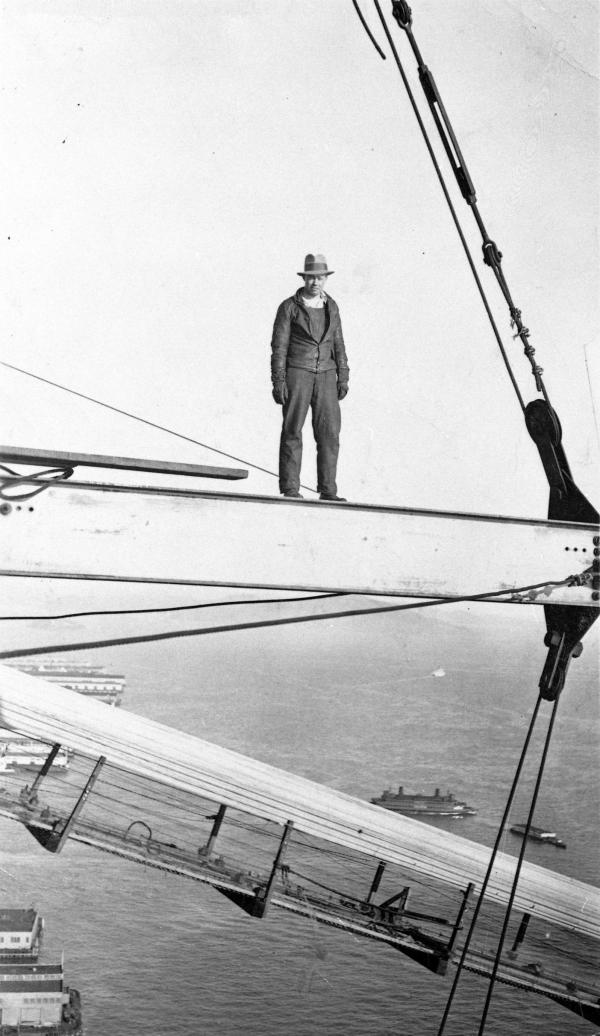
BOB GOULD was our chief civil engineer during the construction period and for some time thereafter (1960-1979). He was our chief liaison with the architecture-engineering firm which acted as our subcontractor to oversee the civil construction. Bob was both an excellent civil engineer, and at the same time, an excellent cartoonist who well understood the dynamics of the political process surrounding SLAC’s construction and realization as a productive laboratory. Here he stands 400 feet above the San Francisco Bay during the construction of the SF-Oakland Bay Bridge.
Cartoon annotations that follow are by W. K. H. Panofsky, SLAC's first Director
The Building of SLAC

PROPOSAL: Gould imagined that the Wizard, Gandalf the Grey, was expediting SLAC construction. Here the Wizard addresses a visiting team from the Joint Congressional Committee on Atomic Energy which provided oversight of the then-existing Atomic Energy Commission. The Committee expressed interest in the fault lines, as earthquake risks played a large role in the Committee’s deliberations. Note the foxhunt in the background and the prehistoric sea animals (believed to have roamed the northwestern coast) which are ahead of the accelerator injector. The fox-hunters of Woodside opposed the SLAC proposal for interfering with their sport. Therefore, Gould's fox is encouraging the Wizard.
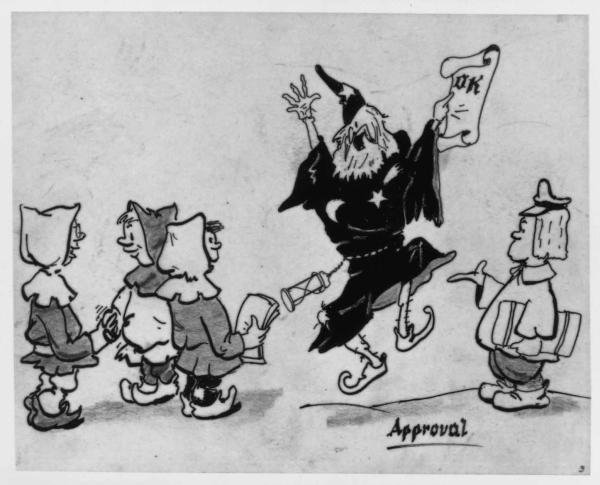
APPROVAL: The Wizard celebrates accelerator construction approval by Congress which was secured in 1961, and at the same time, a representative of potential contractors is stretching out his hand to receive some of the revenue.
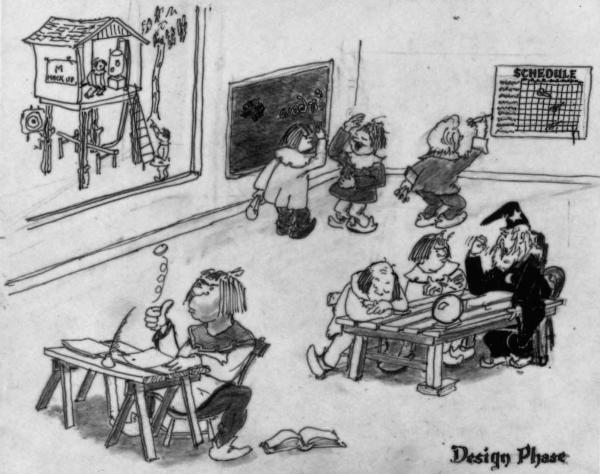
DESIGN PHASE: The upper left-hand corner shows the “Tree House” which was constructed on the main campus at Stanford University next to Stanford Stadium to simulate the vertical cross-section between the klystron gallery and the accelerator. This installation was built to model some of the equipment in its actual physical juxtaposition. The tree house garnered some interest because helicopters practiced lowering the wave guide between the modulators and the accelerator below. When the helicopter lowered the wave guide on a Friday, the Stanford football coach complained saying that the helicopter was a spy for Saturday’s opponent looking at the football practice then taking place. Elements of the design process as illustrated included: flipping a coin, throwing darts at a board displaying the schedule, and design conferences conducted by the Wizard in which some of the participants are asleep.
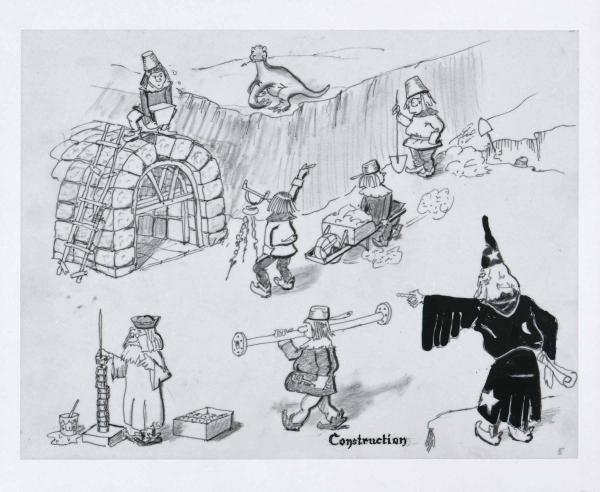
CONSTRUCTION: The accelerator housing is built in Stanford masonry style with a worker lowering the keystone into place. Paleoparadoxia [later renamed Neoparadoxia Repenningi] is watching from the hillside; it is a 14 million year old fossil discovered 25 feet deep in one of the sandstone channels linking the accelerator to experiments. A wise man is stacking the accelerator cylindrical and disk section, illustrating the actual brazing process which was used in construction.
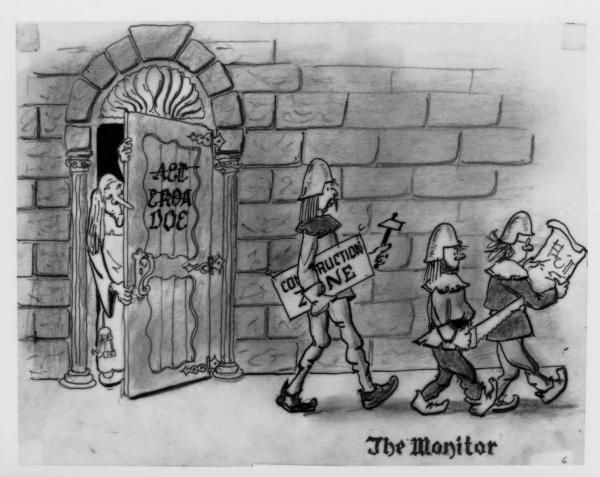
THE MONITOR: During the construction period, the original Atomic Energy Commission charged to be the “monitor” of SLAC was first replaced by the Energy Research and Development Administration (ERDA), and then by the Department of Energy (DOE). While the overseer changed its name, construction workers proceeded with their assigned duties.
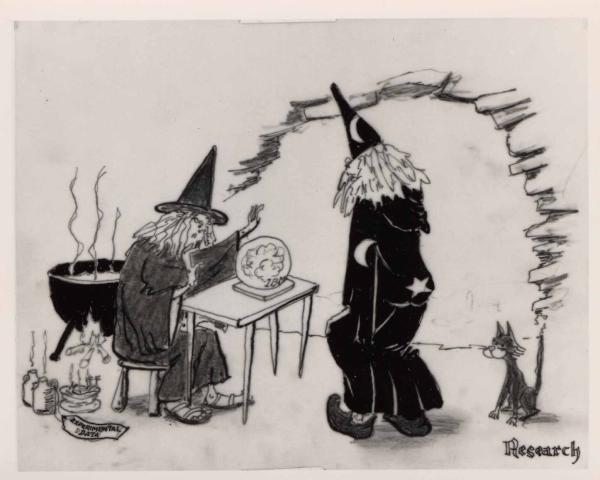
RESEARCH: A fire burning experimental data is used to heat the pot from which fumes emerge to inspire the theorists, who at the same time are looking at a crystal ball. The Wizard is watching all with interest.

EARLY TRIALS - STUCK BEAM: The general commotion occurred when the so-called beam breakup phenomenon was discovered which prevented the beam from being accelerated for the full duration of its pulse. The Wizard is praying to find a solution. Others are running around trying to think of remedies: n oil can, a mop and rake, arguments among the experts, and the fabrication of possible new components designed to alleviate the problem. One fellow is plugging the leak in the wave guide with his finger.
